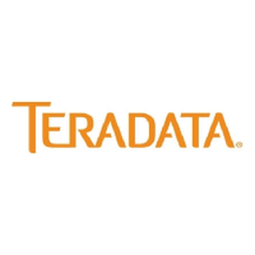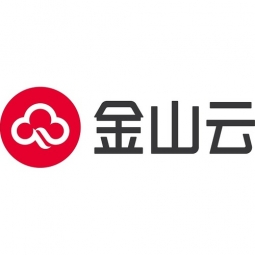Sisense
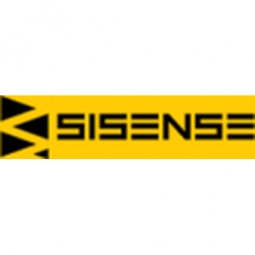
概述
|
总部
美国
|
成立年份
2004
|
公司类型
私营公司
|
收入
$100m-1b
|
|
员工人数
201 - 1,000
|
网站
|
公司介绍
Sisense 是一家商业分析软件公司,它使非技术用户能够加入和分析大型数据集。该公司为分析应用程序的构建者提供强大的工具,以简化复杂的数据并为组织内外的每个人提供洞察力。它使用人工智能算法来分析组织数据。 Sisense 让构建者在单一平台上进行协作,在混合、云原生环境中以业界最低的拥有成本交付,以实现数据和分析的真正民主化。该公司大大加快了构建、嵌入和部署智能分析应用程序所需的时间,这些应用程序可以释放用户的创造力和参与度。它在全球拥有数千名客户,包括 Tinder、Flexport、Expedia、UiPath、纳斯达克、世界经济论坛和救世军等行业领导者。 Sisense 总部位于美国纽约,在旧金山、斯科茨代尔、特拉维夫、基辅、伦敦和东京设有办事处。
物联网解决方案
Sisense 数据和分析平台是一个完整的端到端 BI 平台,它使数据工程师、开发人员和分析师能够构建提供高度交互式用户体验的分析应用程序。
主要客户
惠普、飞利浦、纳斯达克、摩托罗拉、富士通
物联网应用简介
技术栈
Sisense的技术栈描绘了Sisense在平台即服务 (paas), 应用基础设施与中间件, 分析与建模, 和 功能应用等物联网技术方面的实践。
-
设备层
-
边缘层
-
云层
-
应用层
-
配套技术
技术能力:
无
弱
中等
强

Supplier missing?
Start adding your own!
Register with your work email and create a new supplier profile for your business.
实例探究.

Case Study
Vitality's Transformation into an Enterprise-Level Product with Sisense's Embedded Analytics
Vitality, a company focused on making buildings smart by analyzing IoT data for energy savings and risk mitigation, faced a significant challenge as it grew. The company's original plan involved building basic analytics into its platform. However, as the company expanded, customer demands for analytics quickly outpaced what Vitality could build in-house. The company realized it needed to purchase analytics capabilities to stay relevant to its customers. These capabilities needed to be seamlessly integrated into its proprietary platform, matching the look and feel of its software, and delivering an industry-leading user experience. Additionally, Vitality saw a huge potential for future growth by augmenting its powerful algorithms with industry-leading embedded analytics.

Case Study
Transforming Data Reporting: Profusion's Journey with Sisense
Profusion, a data science and marketing services company, was grappling with the challenge of slow and reactive reporting for its clients. The company wanted to transition its clients from relying on manual, Excel-based reporting to a more proactive, real-time optimization. A specific challenge was presented by a London creative agency, which required Profusion to develop a solution for reporting ticketing data to its client, an international live show production company. The agency had two requirements: an intuitive interface to communicate financial investment and return through different marketing channels, and the ability to query a single customer view of its customer and extract this data for use within its other business tools. The existing process was labor-intensive, with information only available sporadically or on the client’s request.

Case Study
Interfolio's Modern Data Strategy: A Case Study
Interfolio, a software service provider for higher education institutions, faced a significant challenge as its user base and data volume grew. The company needed a modern data strategy that could unify internal data, streamline reporting processes, and be flexible and scalable enough to serve as an embedded solution within the Interfolio platform. The primary challenge was selecting a BI platform and a cloud data platform that could handle multiple data sources, model complexity, and enable straightforward dashboard creation. The company had been using a competing BI vendor and an in-house solution for managing their consumer-based SaaS metrics and reporting, and for managing reporting data for quarterly business reviews. However, as data sets grew exponentially, these solutions were no longer performant or scalable.

Case Study
Marketing Agency TLC Sees 25% Improvement in Productivity
TLC’s approach to organizing high-quality data for analysis and distribution across the company and to clients was both labor-intensive and extremely time-consuming. Client data wasn’t being retained in any real meaningful fashion with data analysis and reporting was mostly done manually and managed in extremely complex Excel spreadsheets.On top of this, report delivery was done on a monthly basis by email and the sheer size of the spreadsheets was becoming problematic. Their data was triple the size of what any cloud-based system could handle and the need for superior reporting and analysis in a timely fashion to maximize fundraising was imperative.

Case Study
Automating BI and ETL for Enhanced Enrollment: A MindMax Case Study
MindMax, a company that partners with universities to increase enrollment, particularly among continuing education and adult learners, faced a significant challenge in scaling its customer base. The company's legacy analytics and BI solution required manual extraction of data from disparate sources, including Salesforce, Google Analytics, Facebook Ads, LinkedIn, and Marketing Automation systems. This process was time-consuming and inefficient, making it difficult to create meaningful reports and dashboards that incorporated data from all these different sources. The company's VP of Technology, Brian DiScipio, and Senior Business Analyst, Kiersten Warendorf, recognized the need for a cleaner, faster way to empower their customers with data-driven insights. They knew that the full automation of BI and ETL through the creation of a modern data pipeline and stack was crucial for the company's growth.
Case Study
foodpanda: Democratizing Data with Sisense for Strategic Business Analysis
foodpanda faced significant challenges with their existing data warehouse, which was unable to efficiently handle terabytes of complex data from multiple sources. The limitations included a lack of data mining functions and the inability to affordably process large volumes of data. Additionally, foodpanda aimed to centralize data to promote transparency and democratization, reducing employee reliance on the BI department. They needed an intuitive, self-service BI solution to shift the focus from data collection to insights and strategy.
Case Study
Qualifa: Closing Leads Faster and Increasing Profits
Quentin Villon, a non-technical data analyst at Qualifa, faced significant challenges in managing and utilizing the vast amount of data collected by the company. Internally, he relied on Excel to manually build activity reports, a process that took two hours daily and resulted in a cumbersome 20MB spreadsheet. This method was prone to errors, with broken formulas and other issues, making it a nightmare to manage. The reports were also delayed, going out a day after the activity took place, which meant they could only acknowledge performance rather than influence it. Generating commission reports was even more time-consuming, taking two days each month. Externally, creating campaign insight reports for potential clients was a labor-intensive process that required several days of manual effort. These reports were crucial for client acquisition but were not reusable, adding to the inefficiency.
Case Study
Disability Non-Profit Amadipesment Boosts Managerial Efficiency Using Sisense
As an organization with many different projects, departments, and moving parts, Amadip-Esment collects vast amounts of information from various sources, including human resources, financial ERP, operational software at restaurants and printing units, and specific software systems containing sensitive data related to persons with disabilities. The team had been manually collecting data and arranging it in Excel pivot tables, which was labor-intensive and limited in analysis. They needed to increase the efficiency of organizing and managing these data pieces and required a core BI platform for managerial reporting and customized data queries. Above all, they needed a system that could bring all their disparate data together for analysis.
Case Study
Paylogic Quickly Create New Reports and Analytic Queries
Paylogic considers itself a next-generation technological company, and its organizational structure and operations are highly automated. Instead of employing a standard monolithic ERP system (e.g., SAP), Paylogic has built its IT infrastructure using corporate-environment open-source standards. Automation is approached from a decentralized perspective based on this open-source IT backbone. The company uses different software packages for different functions and ties them together to form an enterprise collaboration platform. The result is impressive: Paylogic enjoys no-compromise IT functionality and flexibility with extremely low software costs. It was into this environment that the company sought to integrate a reporting and analytics tool. The company’s operational and historical data was consolidated into a homegrown data warehouse, based on a MySQL database. Paylogic was looking for a powerful and flexible business intelligence solution that would easily integrate with its existing system, which would not require rebuilding the data warehouse, which would allow non-technical business users to quickly create new reports and analytic queries and which would be relatively inexpensive.
Case Study
Fiverr Turns to Sisense to Get the Fastest Refresh Rates
Fiverr needed quick insights on growing data. The company wanted to connect data from MySQL with data from Google Docs, Spreadsheets, and Analytics to better track user actions on their website and mobile app. As users increased, so did Fiverr’s data needs, making it larger and more complex with millions of rows a day from various sources. Despite using an internal big data system based on Hadoop, the data complexity made it difficult for the team to build reports and dashboards quickly. Fiverr’s senior BI director, Slava Borodovsky, emphasized the need for real-time results due to the dynamic nature of their data. The product department relied heavily on BI to determine their product roadmap, making the need for data more urgent as departments began understanding its impact on their success.
Case Study
Avatrade
With its multiple systems, Avatrade has been generating and gathering large amounts of data for years. Former CTO with a strong technical background, Mr. Lee Levenson, currently VP Operations of AvaTrade, took it upon himself to search out a better Business Intelligence solution for his company. “Our goal was to give a single view from different angles to different people that previously had taken three or four windows from different systems, with business analysts having to export reports into CSV or Excel to generate beforehand. We wanted to replace the need to manually mash all the data together,” explained Levenson. This huge quantity of data, spread over multiple platforms, meant that getting any report done was laborious. “R&D was writing queries, and making very simple reports for whoever needed them before. As is typical in any developed solution, when a report had to be changed or a new report had to be done, it went back to the R&D queue. These requests had to be prioritized. At times this was a huge bottleneck for us,” said Levenson. It was very important to the company to find a tool that would be cost effective, and quick and relatively easy to deploy. A key factor in choosing a BI software was that it be almost exclusively driven by the business user: meaning that anyone in the organization could create their own reports or drill down in dashboards without having to keep running to R&D for every question. “What we wanted from a tool,” summarized Levenson, “was the wow factor. We wanted people to look at it and say wow, where has this been all my life?”
Case Study
Using Big Data Analytics to Produce Value in the Retail Industry
EREA’s clients, primarily in the retail sector, were overwhelmed by the large amounts of data generated in their ERP systems. These datasets often contained billions of rows, making it difficult to analyze and derive actionable insights. The time and resources required to process this data were substantial, and clients were struggling to make sense of it all. EREA needed a powerful BI tool that could handle massive volumes of disparate data and scale across the entire Latin American region. They also required a solution that could be easily customized by non-technical consultants to meet specific client requirements.
Case Study
Casting Company Sees 8-Hour Reports Turn to Real-Time
Casting Network’s data was being stored but not really seen, leaving the Sales and Business Development departments tracking KPIs manually. As the company started to expand internationally, the need to aggregate different data sets and evaluate the business on a global scale became even greater. Needing to access Google Drive documents, multiple Quickbook files and 35 SQL databases comprising over a billion rows of data, Nitika had her work cut out for her in pulling together a solution that met Glen’s directive.
Case Study
How an Australian-Based Healthcare Company Went from Manual Reporting to Easy Analytics
Feros Care faced significant challenges with their manual and time-consuming reporting processes. The organization needed to store and compare historical data, present KPIs visually, and manage a variety of datasets from different sources. Their existing methods were error-prone, resource-intensive, and often outdated by the time reports were completed. Additionally, annual reporting requirements placed a heavy burden on senior management. Feros Care sought a Business Intelligence (BI) tool to alleviate these issues, streamline their reporting processes, and enable data-driven decision-making. They evaluated several BI vendors, including Microsoft BI Stack, IBM Cognos, Tableau, and Qlikview, but found that these solutions required extensive customization, consulting, and mature data warehouses, which were not feasible for their needs.
Case Study
Anaqua Breaks New Ground by Visualizing IP Data with Sisense
Anaqua, a leading provider of intellectual property (IP) management software, faced significant challenges with their existing reporting system. The system was rudimentary, time-consuming, and static, making it difficult for end users to utilize dashboards effectively. Clients were increasingly demanding better analytics and a more intuitive way to visualize their data. Additionally, security concerns were paramount, as many clients opted for On-Premise solutions and needed assurance that their sensitive data would remain secure and isolated from other clients.
Case Study
Job Agency Moves to Real Time Insights
Bold collects a huge volume of data, currently 60TB, and actively analyzes 2TB. They provide subscription-based services, including resume builders, cover letter builders, interview prep, job postings, and worker postings. Each subscription has different frequencies and levels that need to be tracked. They wanted to see which subscription types were getting renewed the most, which products were being purchased the most, and the most effective model for connecting employees to employers. Their existing tool for visualizing transactional data was not meeting their needs. Balaji Jayapal, Head of BI and Big Data, sought a better way to manage their 2TB of transactional data and visualize it effectively.
Case Study
ProMarket's Implementation of Sisense for Enhanced Data Analytics and Reporting
ProMarket required timely and accurate reporting and analysis of key metrics, such as sales, inventory, profit by product category, spoilage, and optimal order quantities for each store. The company was struggling to process very large amounts of data (over 40 million rows) from its centralized database. The data processing, transformation, and analytics were extremely time- and labor-consuming, making it impossible to generate some of the analytics required by management. Business partners of two leading BI vendors demonstrated their solutions to ProMarket and provided implementation proposals. However, ProMarket selected Sisense due to its ability to fully meet their requirements, faster customization of reports and dashboards, impressive data processing speed, and lower total cost of ownership.
Case Study
Over A Dozen Apps with \"ONE-TRUTH\" Sisense BI
Act-On, a software company, faced a significant challenge in managing data from over a dozen web tools used for various business activities. Each tool provided unique BI analytics, making it difficult to identify a single source of truth. The company needed a solution that could integrate these tools seamlessly and provide real-time, actionable insights to improve customer experience and operational efficiency. The complexity of integration, unknown costs, and the need for a tool that could prompt team action were major concerns.
Case Study
Crowd Media Turns Messy Data into Powerful Insights
The company’s marketing, operations, and finance departments all collect large quantities of data. The performance of various marketing channels (social media, television ads, influencer outreach, etc.) would generally be stored in spreadsheets, in addition to operational and financial data. As the business is global and data is coming in multiple formats from a variety of systems, the data was not uniform — it needed to be standardized before analysis. In the beginning, the company was working with a ‘data dump’ — a webpage with the relevant numbers, which could not be filtered or drilled into. As Crowd Media grew, so did their data and number of data sources. Suddenly, they were integrating Redshift DB, MySQL, and connecting to various APIs from Facebook Ads and App Annie in addition to their question/answer database. Ian wanted to generate more detailed reports on a daily basis that could be easily filtered by any user. At first Ian used Excel, but it soon became clear that a more robust system was needed.
Case Study
Juwai Streamlines Multilingual Big Data BI, Creating Real-Time Value for Customers
Juwai.com faced significant challenges in managing and processing their multilingual big data. They used multiple data sources in both Roman and Chinese scripts, and their datasets contained billions of rows. Processing such large datasets with Excel and internal scripting was intensely difficult, leading to manual reports generated by IT that were often out of date. The company needed more flexible and timely reporting to keep up with real-time developments. Additionally, manually adding data led to human errors and inconsistencies, which could only be dealt with reactively. The reliance on IT for report generation also placed a heavy burden on the department, further slowing down the process.
Case Study
Financial Advisory Software Firms Sees Business Doubling
Orion’s platform gathers and analyzes data on client investments, allowing firms to view their overall performance, as well as identifying weak or strong points in their business strategy. This presents its own hurdle, though. There is a LOT of data to wade through: 51 terabytes of it, in fact. Finding a BI tool that could handle this volume without sacrificing granularity was not going to be easy. Before implementing a BI tool, Orion used a manually built, flexible, and customizable reporting platform for operational reporting. So far, so good - except, by the time they generated each business metrics report and sent it to the client several weeks after the month ended, it was already out of date. Plus, the data was static, so clients couldn’t delve in to check the details or context. They only had headline figures, giving them an idea of overall performance. If they wanted to analyze this in any way, they’d have to request a special data query. This could take a day to develop. Orion realized that the company needed to take the leap from business metrics to business intelligence. Their customers needed a platform with better visualizations and direct access to accurate, up-to-date data, in order to make informed business decisions. Orion had executed a proof of concept by integrating an Excel interface into their API to get a feel for what customers wanted. The first approach was to create a dimensional model of the data, push it to firms using an SQL Server and teach them how to connect data to their current data visualization tool. However, Orion customers found dashboard-building to be too complex. Often, they didn’t yet know or understand what they wanted to get out of their data. Clearly, they would need a solution that was ready to deploy out-of-the-box and accessible by all users - not just those with IT expertise.
Case Study
Analyzing Data Quickly to Make Medical Breakthroughs
The Arizona Department of Health Services faced significant challenges in quickly analyzing data from newborn screenings. The process was labor-intensive and relied heavily on Excel spreadsheets, making it difficult to identify trends and quality issues in a timely manner. This delay in data analysis could lead to serious health consequences for newborns, as early detection and treatment of disorders are crucial. The department needed a more efficient and user-friendly solution to manage and analyze the data effectively.
Case Study
Analyzing Visual Data to Track Shipping Trends
With the vast amount of data that CTSI was pulling in each day through millions of invoices and bills, they wanted to find a system that could visualize this data for their customers and provide a place where they could track key trends in the shipping industry. They were not able to provide any kind of deep view into transactions and wanted to offer their customers the chance to see what was going on with their bills on a day to day basis. But taking it one step further, they needed a platform that their customers would actively sign into in order to track those trends. For Todd, getting their services personnel on board and regularly checking the data was a must in order to provide the best analytics and data information.
Case Study
Short Term Housing Provider Optimizes Inventory and Maximizes Profit
With over five-billion records to analyze (and growing), Gianmaria's IT group had reached the limits of manual Excel reporting, realizing that Excel was not a scalable solution for its growing data size and scope. Analyzing Kamernet’s website data was fast becoming a burden on an already taxed IT department. Nearly twice a week, IT staff had to manually extract data from an SQL database, analyze the data, and transform the data in Excel reports. However, Excel reporting once again, proved limited. Employees were not able to arrive at quick, intuitive insights, and were having trouble visualizing their data, primarily reporting on revenue, website subscription data, and market-share information.
Case Study
Wefi
WeFi’s database team had been manually running SQL queries, but they struggled to generate the reports that gave the management team crucial feedback. WeFi needed to perform advanced analysis on large amounts of data in three categories: the behavior of millions of WeFi users, including retention activity and data acquisition activity; the performance and activity of wireless networks to which its users are connected; and the activity records of active clients. The average table sizes for these categories were more than 5 million rows, 70 million rows, and 500 million rows respectively.
Case Study
Translation Services Company Drives Decisions with Data Goldmine
The operational data at OHT consists of over 20-million records in a 100GB MySQL database. Lior knew that they were collecting all the information he needed to get insights, but he simply couldn’t get to it. Transaction data was coming in pretty fast and, in order to continue to be an industry leader, he needed a way to get a 360 degree view of his business as fast as possible. Lior had various ad-hoc and separate solutions running to try and achieve the reporting and analytics the company needed, including manual analysis and home-grown software. He would often rely on someone from R&D to extract reports or would end up manually doing reporting in Excel, which would take weeks. These efforts were taking significant resources, both human and computer, to try and get the reports that were needed. Many of their analytics requirements were not being met at all, which was leading to a lot of frustration within the company.
Case Study
Trupanion Leverages Sisense for Real-Time Data Insights and Operational Efficiency
Trupanion faced challenges in managing and analyzing large volumes of data across multiple departments. The company needed a solution to track real-time performance, optimize marketing opportunities, and build accurate financial reports. Existing in-house solutions were time-consuming and prone to inaccuracies, leading to a need for a robust BI tool that could be easily used by non-technical users and deployed quickly.
Case Study
EDA Transforms Data Management and Analysis with Sisense
Sonny explains that before Sisense, company resources would be invested in reigning in data and wrestling with the complicated process of aggregating, processing and delivering it to the client. “We would build a bunch of pivot tables in Excel on numerous tabs, and then we would give people an import function that would import the raw data so that they could see the dynamic reports in Excel. But there were a number of problems, for example Excel would limit the amount of rows in a report, or the report was slow, or people just didn’t know how to use it.” Sonny also mentions that another significant problem was the task of distributing the data reports to thousands of different clients. To keep the reports current and updated, clients had to manually re-import the data, and eventually customization requests demanded even more time and resources, per client. “Overall, there just wasn’t control over what was happening. On top of that, if I had to update the report configuration, I had to send out thousands of new Excel files that had all the pivot tables defined in them. And ultimately every customer would need us to modify their pivot tables. It was just a nightmare.”
Case Study
Powering Smart Media Buys with Sisense
Ignite Media processes massive amounts of data, maintaining approximately 3 TB of transaction, demographic, and media performance data. They had been building all their reporting internally using PHP and .Net, but it was becoming increasingly difficult to scale. Writing new reports from scratch to follow a 'hunch' could take weeks, making it impractical to test new ideas. The company had valuable data but lacked the resources to fully leverage it. Mazda Ebrahimi, the VP of Application Development, sought a solution that would allow them to produce results faster and more easily without sacrificing their intellectual property.
Case Study
Hotel Management Service Provider Builds Better, More Profitable Guest Relationships
The hotel industry faces significant challenges with scattered and inconsistent data sets from multiple sources, making it difficult to centralize IT and gain meaningful insights. Property management businesses often use on-site, Windows-based hardware that requires dedicated maintenance personnel, further complicating data integration. Bahadour Moussa, a Technology Evangelist, recognized the need for a BI tool that could store, clean, and prepare data before visualization, enabling hotels to analyze guest behavior and enhance their experience. The search for a suitable BI tool led to the discovery of Sisense, which met the criteria of ease of use, attractive UI, and the ability to connect to complex data sources without requiring ETL work.
Case Study
Billing Agency Reduces Processing Time by 16X
Advocate’s old system had problems with speed and scalability. It could take multiple hours to produce an extract, often timing out during the process and failing. On top of this, it was very slow to refresh, was dated, and most importantly, could not handle their growing amounts of data.
Case Study
Online Gaming Platform Sees 23X Improvement in Report Processing Time
Casumo employees were not able to create their own business reports without the assistance of the data team and lacked information about crucial departmental KPIs. Emanuele decided it was time to move beyond time-consuming manual reporting, creating a forward-thinking approach to company data with standardized reporting and a centralized BI system. This would allow company employees to successfully integrate their own data sources and develop easily understood business reports, complete with data drill-down and ad-hoc reporting. After discovering Sisense online, Emanuele decided to move forward with a free trial. He was immediately impressed with Sisense’s ability to quickly connect to its Amazon Redshift database and crunch data into the Elasticube. The performance was significant, allowing him to generate useful reports on the very first day. Sisense gave Emanuele an end-to-end solution for ETL and reporting. He found that with just one hour of introduction to Sisense for his users, they were able to build their own dashboards and start getting the insights that they needed to effectively do their job, with minimal support from his staff.
Case Study
Property Management Company Improves Productivity by 34%
After a huge restructuring effort, FirstPort realized that its organizational decision making was in need of a serious overhaul. Monthly board meetings were led by senior department managers, all with conflicting agendas and data to match. At this point in time, no one could even say with any certainty the amount of properties FirstPort managed. According to Alex, “If you asked three people you’d get three different answers.” Alex recognized the opportunity to not only unify the organization’s decision making process, but lead the company into a golden era of insight. FirstPort was generating so much data from its day-to-day operations, customer queries, financial information, and new business opportunities that they were overwhelmed. They knew they could add value and make improvements for both the customers and company if they could just tap into the data. Alex and his team needed to drive improvements in data related reporting and decisions for customers and staff members, yet lacked the necessary tools and resources to do so, having only Excel and Powerpoint. To meet their objectives, they estimated that it would take up to one year of effort if they doubled the size of their existing BI team of five. Alex decided that the right direction for FirstPort was automating as much of the data cleansing and analysis as possible, and to focus the BI team’s talents on analysis rather than ETL. On top of this, Alex needed a vendor that could do all of this in a reasonable period of time - days or weeks, not months or years.
Case Study
Magellan Vacations Cuts Costs, Boosts Data Access with Sisense
When CEO Andrew Vignuzzi joined Magellan Vacations, his priority was to enable everyone at the company to access, manipulate, and draw insights from their data quickly. The company needed a BI solution that could provide real-time feedback for agents on sales closings, destination performance, and other metrics. Additionally, the solution had to be user-friendly enough for non-technical users to create their own reports and drill down into the data. The dashboards needed to be agile and scalable without requiring major infrastructure upgrades. The personalized, phone-based service of Magellan Vacations made it difficult to track standard sales metrics like closing rates, commissions, and bookings by destination automatically. The company had already trialed a leading in-memory technology, but its performance was sub-par, requiring specialist IT resources and consultants to work with the tool's proprietary scripts. This tool did not meet their needs, prompting the search for a better solution.
Case Study
Closing Leads Faster and Increasing Profits
Before implementing Sisense, alpharooms.com faced significant challenges in providing detailed and interactive reports and dashboards to various business functions. The existing tools, such as Excel and OLAP cubes, were not effective in building user-friendly dashboards or offering easy drill-down interfaces. Additionally, IT involvement was required for any modifications, making the process cumbersome and time-consuming. Lee Eckersley, Head of Business Analysis, had experience with other BI tools like Cognos, Hyperion, and Business Objects, but found them too expensive and resource-intensive for the company's needs. The team needed a more efficient and cost-effective solution to handle their data analytics and reporting requirements.
Case Study
GOAL Academy's Implementation of Sisense for Enhanced Data Utilization and KPI Tracking
GOAL Academy, an online charter school, faced challenges in effectively utilizing data to keep students on track and align staff with key performance indicators (KPIs). The school relied on various data resources like Google Docs, Excel spreadsheets, and different servers, which made it difficult to create a consistent format accessible online. The institution needed a modern tool to better visualize and understand the data, and to merge multiple platforms into one place. The goal was to find a web-based tool capable of processing data from different sources to help teachers make quick decisions in the classrooms and improve student retention and graduation rates.
Case Study
Businessolver's Integration of Sisense for Enhanced Data Analytics and Reporting
In addition to the custom software that Businessolver had developed internally, they were also using several off-the-shelf technologies such as inContact for their service center; Salesforce.com for sales team and Sage for the accounting department. There was no unified method to tie those disparate data sources together and get an overall picture of the customer interaction. Users would get various exported files from various other users and load them up into MS Excel and analyze in a single location. Due to this lack of uniformity to data access, team members were constantly providing different results to the same question. The problem was not the volume of data but rather the disparate sources of it. It was critical to Businessolver to find and acquire a tool that would allow them to connect all their data sources across the enterprise. That way they would be able to have full confidence that their results were accurate no matter who was collecting the information, and that data could drive decision making based on facts and not based on feelings. Sony Sung-Chu is the Director of Applied Data Science at Businessolver and it was his task to find and test potential solutions. With his years working as a Business and IT Analyst, he came at the question from a very technical perspective. Sony also brought in Sara Johnson, the lead BI analyst for Businessolver, whose background is in economics, math and Business Intelligence. Johnson brought in the first data warehouse at Businessolver and was to be tasked as the internal BI expert, responsible for training and maintenance.
Case Study
Product Development Saas Platform Uses Sisense to Maximize Value for Customers
When a food retailer launches a new item, many people are involved in the process: chefs, suppliers, procurement teams, taste testers, marketing, focus groups, legal teams, manufacturers, shipping companies, etc. Moreover, Gap Systems’ clients manage hundreds, even thousands, of product launches a year. That’s a lot of moving parts - including mountains of data that needs to be managed and interpreted to ensure a successful launch. Smartflow was intended to track these disparate items, so you know who is doing what at any particular time. Except, this wasn’t how customers were using the tool in reality. As a result, clients weren’t getting the value or insights they needed. They would say things like, “It seems our legal department is slowing us down, we need to do something about that,” when in fact, they couldn’t really show either way whether legal was the problem. It was all based on instinct or assumption, rather than the hard data they had at their fingertips. Evidently, choice wasn’t working. Customers needed high-end reporting embedded into the product to make Smartflow a success.
Case Study
Integrous Marketing: Improved detail and accuracy, Up to 50% revenue increase for clients
Integrous Marketing faced significant challenges in integrating data from multiple disconnected sources such as Adwords, Analytics, email marketing tools, and Salesforce. The process of manually gathering, cleaning, and joining datasets was labor-intensive and prone to errors. Additionally, generating visualizations from the data in Excel was time-consuming and often resulted in outdated and inaccurate information. The company needed a method to automate these steps and provide a better user experience, especially given the limitations in the types of reports and views that some tools provided.
Case Study
Known Factors Uses Sisense Embedded Analytics to Make Their Own Services ‘Easier to Sell’
Many companies today often have data that is so complex or distributed, it needs a dedicated team of specialists to clean and maintain it, and only then can a BI tool be useful. There’s a lot of work preparing complicated and dirty data, and many businesses need a simple way to prepare data that most BI tools on the market cannot provide. Mike saw that even after implementing a BI solution for customers. There was often such a steep learning curve, the customer would still be unable to build reports and dashboards independently. Mike’s customers typically come to him after they've failed with another BI solution. His company then takes on managing the client's internal data, some of which as been around for 10+ years, and is big, disparate, and dirty. His team would then wrangle the data together into a BI solution for the client. Mike saw that even after implementing a BI solution for customers, it often had such a steep learning curve, the customer would still be unable to build reports and dashboards independently. It was important that his customers could be self-sufficient, so he wanted to standardize on a tool that he knew would be a win for them.
Case Study
Homecare and Medical Staffing Company Sees 10X Performance Improvement
BrightStar Care faced challenges in visualizing large volumes of data spread across multiple systems, including their home-grown application ABS, accounting software, help desk software, survey systems, and Microsoft Dynamics. They needed a solution to quickly answer business questions without rebuilding the entire pipeline for each new analysis. Additionally, they wanted to distribute their dashboard solution globally, allowing franchisees to access and visualize their own data easily. The complexity of the data and relationships between sources made it tedious to analyze, and they required a BI tool that offered self-service capabilities, agility for ad-hoc queries, visually attractive presentations, and a low cost of ownership.
Case Study
Fairfly Uses Sisense to Get Business Insights Without Relying on Their Technical Departments
Doron Gill, VP R&D at FairFly, needed to make day-to-day decisions based on a rapidly growing database. He wanted to combine this data with several other sources, including MixPanel and a CRM, without relying on R&D resources. After researching several BI tools, Doron realized he needed a tool that was easy to use for non-technical business managers. He was concerned that if R&D or IT had to manage data requests daily, it would not be sustainable. Doron and his colleague Ami Goldenberg were impressed by Sisense's ability to be used by business users without R&D involvement and its intuitive data visualizations.
Case Study
Security Forces Equipment Manufacturer Sees 50% Growth in Sales in Six-Months
Gentex, a leading supplier of personal protection and situational awareness systems, was struggling with an outdated ERP database that was over 30 years old and heavily customized. The company needed fast and accurate operation planning metrics such as projected revenue, opportunity forecasts, and expense reports. However, incorporating modern technical tools into their ERP environment for data analysis was limited and costly. The system had millions of records, and they needed a solution that could quickly process this data and deliver actionable intelligence.
Case Study
Iowa Communications Network (ICN)
When Ric Lumbard, Executive Director at ICN, stepped into his position, he realized that a central visual point for data did not exist. As a broadband carrier, ICN needed a visual system to be able to monitor the overall health and performance of the organization. Director Lumbard explained that state agencies tend to focus on monitoring the legal aspects of operations, but measuring the performance of operations is not always given the same attention. Director Lumbard was looking for a solution to raise the importance of performance awareness by providing visual cues and monitoring that allowed the staff to easily and quickly see a dashboard with important performance indicators. Another focus point for ICN was that the data to be analyzed was scattered across numerous sources–from a variety of databases to spreadsheets–in multiple servers and applications. The operations perspective needed a way to combine that data, maintain a single repository of truth, and visually analyze the data without sifting through dozens of pages of spreadsheets and columns.
Case Study
Jack Doheny Companies’ Data-Driven Culture Saves Millions Of Dollars
The decision to evaluate BI solutions came in the wake of what could be defined as a “cultural revolution” taking place in JDC: from siloed data, with each stakeholder holding on to his or her own data and only sharing it with others on a “need to know” basis, to a corporate culture of complete transparency of information that aims to make data available to everyone, and challenge them to make good use of it. The data itself was being stored in a Cobalt character-based CRM system running on the IBM RS/6000 platform, as well as Excel spreadsheets. This data consisted of sales, operational, utilization, financial and other data. Prior to Sisense, reporting was done with Excel and Access. JDC has been looking for some sort of dashboard software for roughly two years but did not find any product that could suit their needs, until they ran into Sisense in a user group in which two Sisense customers had presented it. The VP of Parts and Business Systems downloaded the trial version right there at the convention, and within two days was already publishing dashboards.
Case Study
Sisense's Ease of Use Lets Pantechnik International Create Dashboards On the Spot to Boost Sales Offering
Pantechnik International faced significant challenges in managing and utilizing their vast and scattered data sources. The company struggled with a 'black hole' of largely untapped client data, making it difficult to gain a holistic view of overall performance, cost-effectiveness, and service level agreements (SLAs) of their carriers. Senior management lacked visibility and control over these metrics, which was further compounded by the data preparation nightmare of the ETL process. The company evaluated various solutions, including Qlikview, but found the 'buy before you try' business model unappealing. They needed an embedded BI software with a powerful backend capable of handling thousands of large, scattered datasets.
Case Study
Res Consortium Changes the Conversation in Healthcare by Turning Heavy Reports into Performance Dashboards.
Over the last 15 years, the National Healthcare Service (NHS) of the UK increased their spending from 70 billion British pounds to 150 billion British pounds. In order to improve their efficiency and cut costs, the NHS created dedicated internal organizations to measure performance of organizations against each other, and to publish and distribute the data in performance reports. The problem was, the healthcare data was very complex - big, scattered and siloed - limiting the reports to focus on one area of measurement or one organization per report, and were published as static PDF documents. Users were unable to compare to other organizations or integrate across different sets of data, giving them an isolated view of their performance. Data regarding each area, such as clinical performance, cost performance, and staff and patient surveys were reported in separate and heavy 50-page plus documents that required time and research to see a bigger picture across platform. That’s where Res Consortium came in with the goal of providing performance dashboards that showed the data across platform in an intuitive way. In the past Res Consortium was producing dashboards using Excel with protection keys to protect sensitive patient data, but started looking for a BI platform that could move the dashboards to a web-based environment as well as to more efficiently and quickly handle the amount of complex data typical in healthcare.
Case Study
Travel Group Minimizes Effort and Resources, Maximizes Insights and Flexibility
FCTG faced challenges in pulling data together for a simple and user-friendly report to track daily sales and performance across the company. It would take up to three hours each morning to create this report, which the sales team used to influence and plan their daily targets. There was a need to improve efficiency and minimize any lost opportunities, and thus, it was necessary to develop an end-to-end solution that would be able to replace manual reporting, and allow 80 business users to receive daily reports at the click of a button. Prior to Sisense, the nSight brand didn’t exist and Flight Centre’s finance team was responsible for generating all of the company’s reports. As a part of the finance team for three years, Graeme proposed the idea to implement a BI solution, as he noticed analytics were getting more and more difficult with the company’s rapid expansion. He looked at three different BI software companies hoping for a solution that could automate daily reporting in a cost-effective way, be easily managed by people who may have little to no technical knowledge, and also allow business users to flexibly manipulate the data to immediately answer questions they had. Sisense checked all three boxes.
Case Study
Marketing Firm Sees 60X Improvement in Development Time
Michael says data streams included CSV, Excel, or Salesforce along with donations over time, who gave how much, when they gave it, and in what fundraising program. What may have looked like a very straightforward, neat, and organized Excel document from a foundation, actually possessed a great deal of insight that could be derived from it if the data was manipulated strategically. Michael’s goal was to dig into what donations amount to loyalty, how contributions come in, renewal rate, weight of attrition, and much more. On top of this, because CESM is looking at time series data and is able to look at time analysis, like seasonality or cycles of giving, there were even more insights to be discovered. However, after many days of work, all Michael could say was, for example, 'in 2006, your renewal rate was 60%.' Looking at data that was static, he was unable to go further without putting a lot more effort into it. It was time to find a better solution, and that is where Sisense came in.
Case Study
Blueline Telecom Revs from Monthly to Daily Insights
Blueline’s biggest problem was figuring out which budget allocations were connected to which sources of revenue. A single marketing campaign could bundle together various lines of business, making it hard to get a clear picture of the bottom line of promotional activities or to break down the revenue of product bundles by product and sub-product. The company lacked a way to combine data sources from different departments, leading to standalone reports that didn’t match up. This confusion resulted in inappropriate investments, reactive problem-solving, and missed business opportunities. As Blueline prepared to launch their mobile initiative, Nacer decided it was time to address the problem once and for all, anticipating high volumes of transactions that could cause enormous problems if not managed properly.
Case Study
Footwear Importer Saves 20 Hours Per Month on Report Generation
ES Originals faced significant issues with disparate and disconnected data, with nearly 1000 reports running against their ERP system. This led to logistical challenges, as reports were static and required new reports for any additional fields or selection criteria. The company needed a unified and standardized reporting system to streamline the process and reduce the number of reports. Additionally, salespeople had to bring hard copies of reports to client sites due to unreliable internet connections, and data from partners came in different formats, complicating the reporting process.
Case Study
Event Management Company Gives Clients a Way to Make Sense of All Their Data
EEG had to structure the data to have the functionality and flexibility at an interface level so that they could easily deploy it to any event type and use consistent tools to report on the data. That is where the problem arose: though the data was being collected, the data created data dumps that were cumbersome to understand and not structured to produce easy or accurate data analysis. After Adam sifted through the data dumps of a number of their clients, he realized that some data just couldn’t be connected in a traditional reporting environment - creating gaps of what they could report. After talking to a longtime client, he found that many of their clients were forced to manually pull data and reports together - and were spending a significant amount of time doing it. Adam attempted to solve the problem by doing data analysis for his clients internally and sending out the reports. But, for Adam to do that internally, he had to pull the data out of Salesforce, cobble it together, create reports and charts in Excel and then email them out. Every report would have taken weeks at least, and the clients wanted to see this data frequently and quickly, so it wasn’t feasible.
Case Study
Manage Analytics Challenges with Sisense for Custom Furnishings and E-commerce
As the company grew, Online Commerce Group’s data become so large that, without a new generation Big Data Analytics solution, management couldn’t receive quality reports. The fast growth of the company meant that Data Manager Paul Auen was unable to run reports with large enough data sets to provide any real value to the business end. “Originally, we could do reports manually, but as the data sets got larger, the reports took longer and impacted the transactional database,” Auen recalled. “We were constrained between keeping the servers running or making it available for reports.” Online Commerce Group chose a popular business analytics tool, but it was too complex; Auen’s group was unable to run reports at the speed and frequency needed for the business. Quickly, the team abandoned and turned to Sisense. The company needed a solution that could: 1. Quickly analyze large data sets coming from multiple sources. 2. Provide drag-and-drop modeling and dashboard creation for business users. 3. Automatically generate reports and publish them to the company intranet. 4. Require a minimal capital investment and learning curve for use.
Case Study
PLASTIC JUNGLE cut through the wild world of data.
Plastic Jungle’s business success is predicated by its ability to move faster than the competition. When the company brought in a new CFO in 2012, he aimed to deploy a data solution that would match the company culture. Speed, accuracy and agility were the key tenants for the company data approach. “We wanted to make sure we didn’t paint ourselves into corner by taking a traditional approach to data warehousing.” That meant a solution that could grow to massive amounts of data, and allow regular business users to work with data quickly without requiring a huge investment that would leave them beholden to the product.\n\nPlastic Jungle's BI requirements included the ability to:\n• Manage and sustain the entire operations aspect of Plastic Jungle’s data warehouse with little or no operating support from the engineering and IT staff\n• Allow business users to create any ad-hoc reports they required\n• Provide the abstraction layer between the schema and the metrics that the business sought\n• Refresh in close to real-time – a minimum of once per day, and ideally every couple of hours\n• Not incur a significant capital outlay
Case Study
Europian Non-Profit Sees €1 Million+ Annual Savings
FTA’s member companies needed reliable data on producers to avoid human rights abuses and unsanitary conditions. The manual system for auditing and reporting data was inefficient, making it difficult to provide timely and accurate reports. Members had no way to independently access data, requiring internal resources to manually extract information from various sources. This lack of visibility and efficiency was a significant challenge for FTA.
同类供应商.
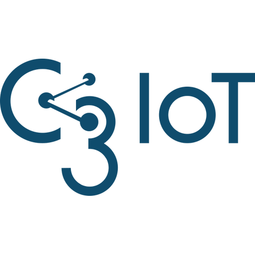
Supplier
C3 IoT
C3 IoT provides a full-stack IoT development platform (PaaS) that enables the rapid design, development, and deployment of even the largest-scale big data / IoT applications that leverage telemetry, elastic Cloud Computing, analytics, and Machine Learning to apply the power of predictive analytics to any business value chain. C3 IoT also provides a family of turn-key SaaS IoT applications including Predictive Maintenance, fraud detection, sensor network health, supply chain optimization, investment planning, and customer engagement. Customers can use pre-built C3 IoT applications, adapt those applications using the platform’s toolset, or build custom applications using C3 IoT’s Platform as a Service.Year founded: 2009

Supplier
Altair
Altair is a leading provider of enterprise-class engineering software enabling innovation, reduced development times, and lower costs through the entire product lifecycle from concept design to in-service operation. Our simulation-driven approach to innovation is powered by our integrated suite of software which optimizes design performance across multiple disciplines encompassing structures, motion, fluids, thermal management, electromagnetics, system modeling and embedded systems, while also providing data analytics and true-to-life visualization and rendering.
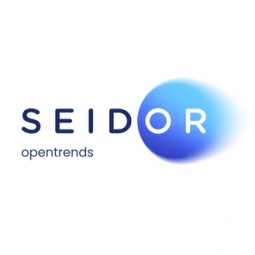
Supplier
Opentrends
Opentrends provides the most advanced custom software solutions to place companies in the Digital Transformation path, allowing them to achieve innovation advantage and contribute to their growth acceleration.More than 18 years delivering innovative projects of high technological complexity in a wide range of industries, while guaranteeing quality and alignment with our client’s objectives. In fact, over a hundred global companies across various industries have full Trust in our unique ability to design, build, implement, and integrate complex software innovations into their organizations.Let’s excel your digital future today.







